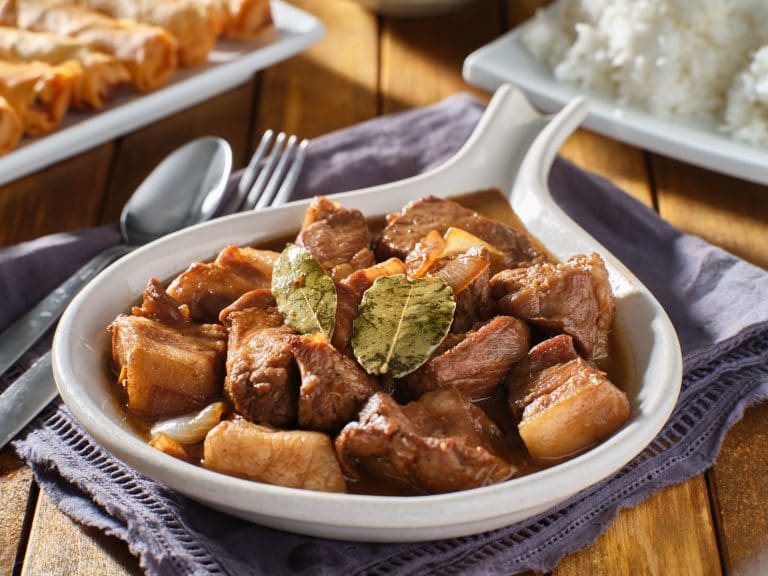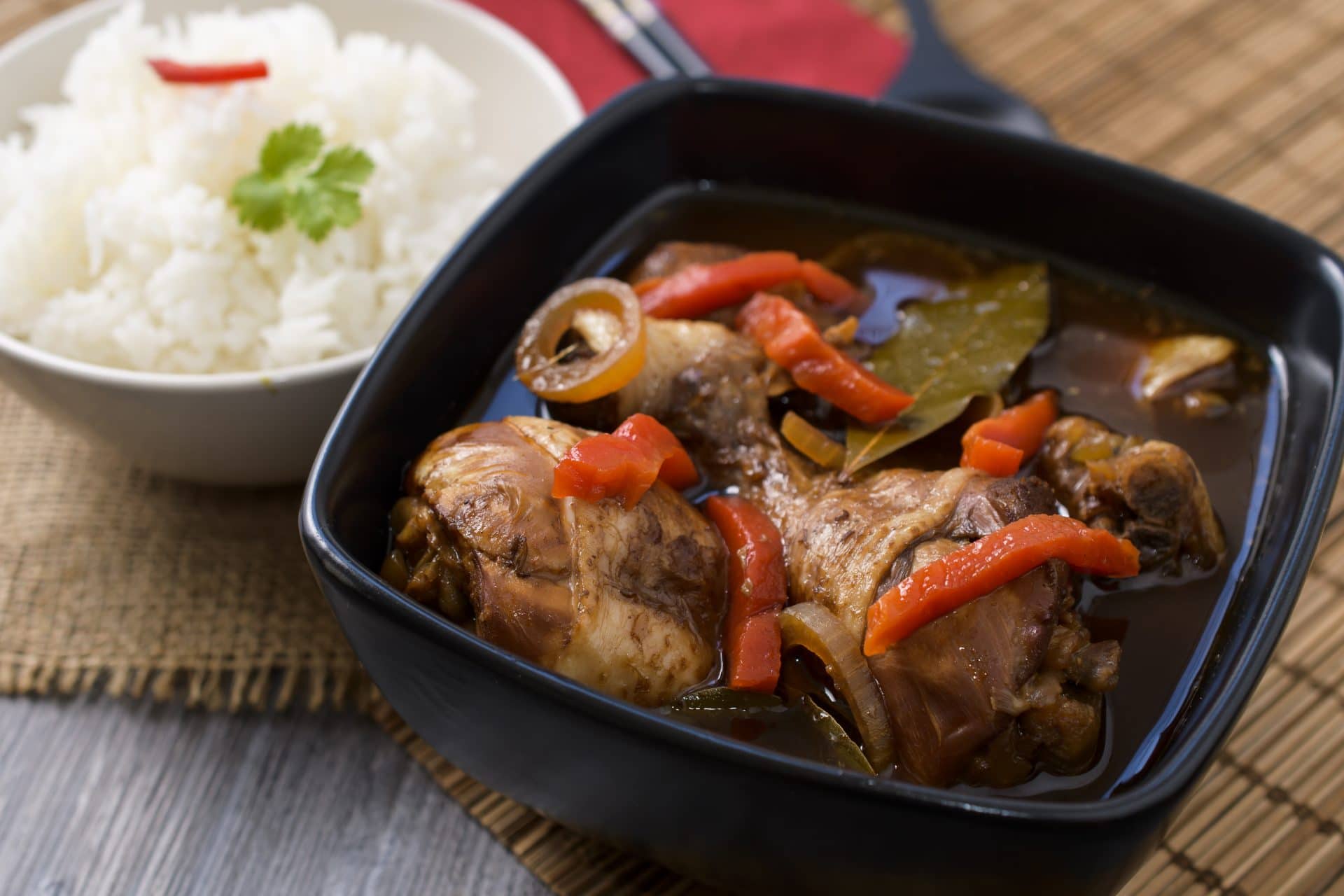
Filipino cuisine is not only delicious, but it also has a rich cultural past. Adobo is a Filipino dish that has become a global sensation since it was first introduced in the 1950s. The Spanish word for marinade or pickle is “adobar,” which is how the term “adobo” got its start. Cooked or steeped in vinegar are the most common preparation methods. Numerous scholars, on the other hand, believe that the assertions made in favor of Adobo do not originate with the Spaniards.
They said that this was the case even before the Spanish came to conquer our nation, the Philippines. There is a dish in the Philippines that Filipinos call “Adobo,” although it is not named that. Spanish adobo, according to Doreen Fernandez, is really a pickling sauce, not a meal. Filipino adobo is a vinegar-based pickled or grilled meal. She said that “Adobo” is a traditional Philippine dish from her homeland. According to the Italian explorer Antonio Pigafetta’s book “The First Voyage Around the World from 1519 to 1522,” when his ship arrived on the island of Luzon, the Filipinos served a salty meat dish as one of their first meals.
They also loved to cook and eat food soaked in vinegar, according to “Antonio.” Since Pigafetta was ignorant of this technique, he dubbed it “Adobo,” after the cooking process known as “adobar” or “marination” in their own country. According to Raymon Sokolov, “Adobo is really a local Filipino creation. For lack of a better name, the Spaniards called it after another Spaniard who cooked in a similar fashion. Adobo, according to the Spaniards, is an example of “Lexical Imperialism” in Spanish cuisine.
According to what I heard from my grandma, when you use vinegar to cook adobo, the germs won’t destroy the meat because of the acid component, and the meat will stay fresh longer. As a result, adobo is more of a meat preservation technique than a meal. However, did you know that there are many variations of adobo across the Philippines, each based on the ingredients that are readily available? But the only thing that makes adobo and adobo the same is that both use vinegar as a component.

We have a wide variety of adobos in our nation. Though traditionally made with beef, it may also be made with chicken, fish, or even seafood if you like. Sometimes they add other items, such as eggs, tofu, and potatoes, which is what my mother always did. The peanuts on some of the adobo that I’ve previously tried are a nice touch. When they served their adobo in Pampanga without soy sauce, they dubbed it “Adobo Blanca,” since there was so much sugar cane in the region.
The yellow ginger they use as an ingredient is called “Adobo Dilaw” due to its yellowish hue, which I have also tasted in Batangas. We attempted to make adobo with coconut milk in our region of Bicol, which is renowned for its coconut milk, and it’s named “Adobo Gata.” Because soy sauce originated in China, we use it in adobo because of the Chinese influence on our cuisine.
“There are numerous kinds of adobo,” says DTI secretary Ramon Lopez. So that no one else may claim ownership of the Filipino-style dish, we need to promote a fundamental traditional recipe that we can export to other countries. This is all up to you.
There are so many distinct kinds of adobos, it’s little wonder they’re called after the Spaniards. Regardless of its origins, this meal is very tasty, and you should try it at least once.
I want to give credits to Ma’am Kara David, a Filipino journalist who also happens to be a culinary arts graduate. Her video taught me a lot. If she continues doing this, I hope she’ll spread the word about our local cuisine to not just Filipinos but to people all over the globe.